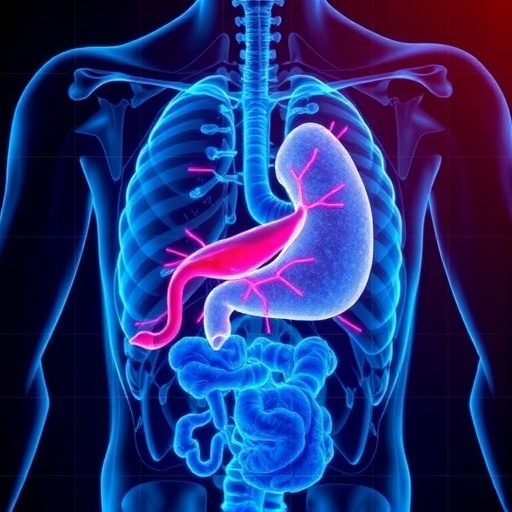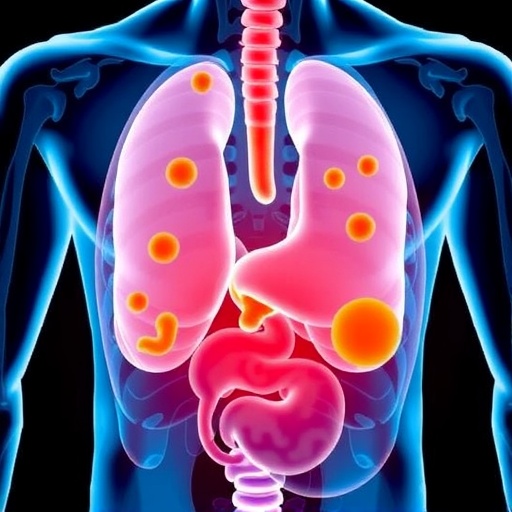In a groundbreaking development presented at the ESMO Congress 2025, the oncology field witnesses a transformative leap forward with the introduction of next-generation antibody-drug conjugates (ADCs) in the treatment of early-stage HER2-positive breast cancer. Until recently, ADCs have primarily revolutionized therapeutic strategies for advanced, metastatic diseases by precisely delivering cytotoxic agents to tumor cells, thereby enhancing efficacy while minimizing systemic toxicity. Now, pivotal phase III clinical trials—DESTINY-Breast05 and DESTINY-Breast11—demonstrate remarkable clinical benefits of ADCs in both neoadjuvant (pre-surgical) and adjuvant (post-surgical) settings, reshaping contemporary treatment paradigms and ushering a new era in curative oncology.
The DESTINY-Breast05 trial marked a significant comparison between trastuzumab deruxtecan (T-DXd), an advanced ADC conjugated with a potent topoisomerase I inhibitor, and the established standard trastuzumab emtansine (T-DM1), in patients with residual invasive disease after neoadjuvant therapy. Historically, T-DM1, combining trastuzumab and the cytotoxic DM1 molecule, has been the sole ADC approved for this high-risk population, delivering improved disease control over conventional chemotherapy. However, T-DXd unequivocally outperformed T-DM1, decreasing invasive disease recurrence and extending disease-free survival by 53%, supported by robust hazard ratios of 0.47 and impressively narrow confidence intervals. These data indicate T-DXd’s superior tumoricidal activity, attributable to enhanced payload potency and optimized linker stability that increases drug delivery to malignant cells.
Importantly, T-DXd also demonstrated enhanced central nervous system (CNS) efficacy, a critical advancement in HER2-positive breast cancer management, given the propensity for brain metastases in this subtype. The trial revealed a clinically meaningful extension of brain metastasis-free intervals compared to T-DM1, with hazard ratios suggestive of reduced CNS spread. This highlights T-DXd’s capability to penetrate the blood-brain barrier more effectively, potentially through its smaller molecular structure and higher tumor selectivity. This feature has profound implications not only for improving survival but also for preserving neurologic function and quality of life.
Complementing these results, the DESTINY-Breast11 trial investigated the efficacy of T-DXd in the neoadjuvant context, administered sequentially with standard HER2-targeted therapies such as trastuzumab and pertuzumab (THP), compared to the conventional anthracycline-based chemotherapy regimen (ddAC-THP). In this cohort of 927 treatment-naïve patients with high-risk early breast cancer, the ADC-enhanced regimen substantially increased pathological complete response (pCR) rates to 67.3%, a statistically significant improvement over the 56.3% achieved with traditional chemotherapy. This represents a crucial indicator of favorable long-term outcomes, as pCR is strongly correlated with reduced recurrence and improved overall survival.
Beyond efficacy, the safety profile of T-DXd demonstrated important advantages over anthracycline-containing regimens. Cardiotoxicity, a well-documented limitation of anthracyclines, was notably reduced with the ADC regimen, aligning with the growing preference for treatments that minimize cumulative cardiac damage, especially in HER2-positive breast cancer patients who often receive multiple cardiotoxic agents. The manageable safety and tolerability of T-DXd further endorse its integration into earlier treatment lines, offering patients a less toxic alternative with superior outcomes.
The implications of these two landmark trials reach far beyond immediate treatment guidelines. They establish a new therapeutic cornerstone, positioning T-DXd as the preferential ADC for patients with early-stage HER2-positive breast cancer across the disease continuum—from initial therapy to the adjuvant setting. This shift represents a significant milestone, as historically, HER2-positive breast cancers were associated with aggressive clinical behavior but now emerge as one of the most curable breast cancer subtypes, with ADCs playing a pivotal role in enhancing cure rates.
This evolution in ADC application is underpinned by innovations in molecular design and pharmacodynamics. T-DXd harnesses a cleavable linker technology that allows selective release of a highly potent topoisomerase I inhibitor directly within the tumor microenvironment. This targeted release reduces systemic exposure and off-target toxicity while overcoming resistance mechanisms commonly observed with previous-generation ADCs. These refinements exemplify how bioconjugate engineering translates into tangible improvements in patient outcomes.
Nevertheless, despite these impressive advances, critical challenges remain on the horizon. Toxicity profiles of ADCs necessitate vigilant monitoring and strategic management, especially to prevent rare but potentially fatal events such as interstitial lung disease and severe hematologic toxicities. Optimizing dosing schedules, treatment duration, and sequencing with other HER2-directed agents will be paramount to balance maximal therapeutic efficacy with patient safety. Moreover, refining predictive biomarkers remains an urgent priority to tailor ADC use, reduce overtreatment, and identify patients most likely to derive benefit from these sophisticated agents.
The data emerging from DESTINY-Breast05 and DESTINY-Breast11 represent a watershed moment in oncology research, signaling the formal incorporation of advanced ADCs into curative therapy. Their success underscores a broader trend in cancer treatment towards smarter, more precise targeting of malignant cells earlier in the disease course, leveraging biological insights to enhance the depth and durability of response. As ADC technology matures, it promises to dramatically reduce recurrence rates and prolong survival across multiple tumor types beyond breast cancer.
Looking forward, ongoing translational and clinical research will further elucidate the mechanisms behind ADC effectiveness and resistance. Expanding the ADC platform to encompass diverse payloads and target antigens may unlock new therapeutic avenues across both solid tumors and hematologic malignancies. Meanwhile, integrating ADCs with emerging modalities such as immune checkpoint inhibitors and targeted kinase inhibitors offers exciting potential for synergistic effects, amplifying anti-tumor activity and overcoming immune evasive strategies.
In summary, the results from the DESTINY-Breast05 and DESTINY-Breast11 trials not only redefine standards of care for early-stage HER2-positive breast cancer but also herald a new epoch in oncology where bespoke, biologically driven therapies can achieve unprecedented curative success. As clinicians and researchers rally to implement these findings, the prospect of transforming a once formidable cancer subtype into a largely curable disease becomes ever more attainable, offering renewed hope to patients globally.
Subject of Research: Early-stage HER2-positive breast cancer treatment with antibody-drug conjugates (ADCs).
Article Title: Next-Generation Antibody-Drug Conjugates Redefine Early-Stage HER2-Positive Breast Cancer Treatment: Insights from DESTINY-Breast05 and DESTINY-Breast11 Trials.
News Publication Date: 18 October 2025.
Web References: Available through the European Society for Medical Oncology (ESMO) official congress reports and publications.
References:
DESTINY-Breast05 trial results.
DESTINY-Breast11 trial results.
Regulatory approvals and prior data on trastuzumab emtansine (T-DM1).
Keywords: Breast cancer, HER2-positive, antibody-drug conjugates, trastuzumab deruxtecan, DESTINY-Breast trials, neoadjuvant therapy, adjuvant therapy, pathological complete response, brain metastasis, cardiotoxicity, oncology innovation.
Tags: clinical benefits of ADCscytotoxic agent delivery systemsDESTINY-Breast05 trial resultsearly-stage cancer therapiesHER2-positive breast cancer treatmentimproved disease-free survivalinnovative cancer treatment strategiesneoadjuvant and adjuvant therapynext-generation antibody-drug conjugatesoncology treatment advancementstrastuzumab deruxtecan efficacytrastuzumab emtansine comparison





